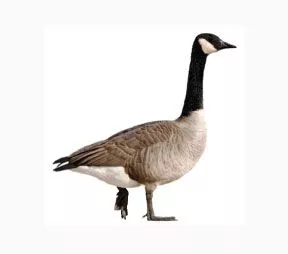 By definition, Canadian Geese are not classified as pest birds and are afforded protection by federal and state agencies. Nonetheless, Canadian Geese are increasingly becoming the scourge of suburbia as their numbers have grown in the past decade from only a few thousand to hundreds of thousands of these birds.
By definition, Canadian Geese are not classified as pest birds and are afforded protection by federal and state agencies. Nonetheless, Canadian Geese are increasingly becoming the scourge of suburbia as their numbers have grown in the past decade from only a few thousand to hundreds of thousands of these birds.
Canada Geese are large water birds with a long neck, large body, large webbed feet, and a wide, flat bill. They have a black head with white cheeks and chinstrap, black neck, tan breast, and brown back. With a wingspan from 4.2 to 6.1 feet, they can weight up to 14 pounds. The familiar V shaped squadron of honking geese heading south is becoming a rare sight. Country clubs and business parks offer tasty manicured lawns and ponds providing an ideal habitat and effectively modifying their migration cycle. Geese are very opportunistic and easily exploit the new “easy living” conditions found in an urban environment.
The Canada Goose can quickly become a problem to any homeowner, property owner, golf course groundskeeper or park superintendent. Each year the Canada Geese usually migrate north to Canada and the northern USA where it breeds in a variety of habitats.
In Arizona with the nice weather more often times the geese decide to stay and use your property as their breeding site and grazing site. They can soon destroy your lawn, contaminate your pond, make playing golf or make your property downright dangerous to walk on.
Types of Goose Deterrents
Did you know that geese often sleep with one or both of their eyes open? They can shut off half of their brain to sleep while the other half is aware of their surroundings. The Away With Geese unit that we some time use emits a pulse of amber light every 2-3 seconds that puts the geese on high alert and disrupts their ability to sleep. This permanently alters the feel of the habitat. Because geese like to sleep in the same area that they inhabit during the day, they will soon choose to leave and find a new habitat that allows them to rest, leaving your property goose free.
Other options we have available are products like Liquid Goose Deterrents which uses the sense of taste to get rid of the geese. This is made using methyl anthranilate, a grape extract that is sprayed on the lawn to give it a flavor that the geese do not like. This substance irritates the goose’s trigeminal nerves and mucous membranes and causes them to leave the area searching for a better grazing site but needs to be applied often.
Sound, visual and light goose deterrents can be used in tandem with the liquid goose deterrents to keep geese off areas that they are a problem. Sound deterrents and predator calls heard by the geese may cause them to leave the area for a safer spot. Coyote decoys are also effective in scaring geese away. The coyote is a natural predator of geese. They love to go after the eggs and goslings of a mating pair; using the coyote decoys on your lawn will trigger the instinct of fear and the geese will leave for a safer home.
Physical barriers such as overhead grid wire (.96mm) and 4″ mesh net can be extremely effective barriers but are site specific. These grids can be installed above water surface to prevent landing. Fencing made of grid wire provides a discrete barrier to dissuade geese from entering property (especially from water areas) and can be electrified for increased effectiveness.


 By definition, Canadian Geese are not classified as pest birds and are afforded protection by federal and state agencies. Nonetheless, Canadian Geese are increasingly becoming the scourge of suburbia as their numbers have grown in the past decade from only a few thousand to hundreds of thousands of these birds.
By definition, Canadian Geese are not classified as pest birds and are afforded protection by federal and state agencies. Nonetheless, Canadian Geese are increasingly becoming the scourge of suburbia as their numbers have grown in the past decade from only a few thousand to hundreds of thousands of these birds.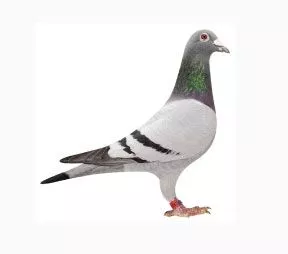 Feral Pigeons (Columbia Livia) are the number one urban pest bird, causing damage where ever they nest or roost. Pigeons are descendants of domesticated European Homing Pigeons or Rock Doves, so they have a varied diet and feel at ease making their homes in man-made structures, they also lay 2 – 3 eggs every 3 or 4 months all year long in Arizona.
Feral Pigeons (Columbia Livia) are the number one urban pest bird, causing damage where ever they nest or roost. Pigeons are descendants of domesticated European Homing Pigeons or Rock Doves, so they have a varied diet and feel at ease making their homes in man-made structures, they also lay 2 – 3 eggs every 3 or 4 months all year long in Arizona. units, roof line overhangs, solar panels or even wide window sills.
units, roof line overhangs, solar panels or even wide window sills.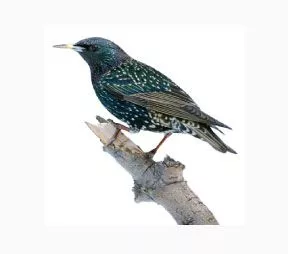 Like the House Sparrow, the Starling was introduced from Europe in the 19th century. However, it did not spread as fast and only reached the western coast within the last few decades.
Like the House Sparrow, the Starling was introduced from Europe in the 19th century. However, it did not spread as fast and only reached the western coast within the last few decades.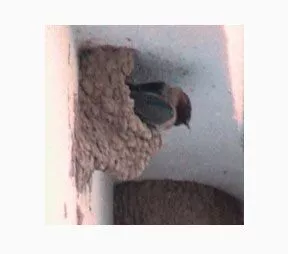 These sleek little birds are well known for their long migration and nesting habits. Cliff and Barn Swallows spend their winters in South America and summers in North America. They arrive around March in the southern part of the country, reaching the northern states in April. Swallows are very territorial and will always come back to the same nesting site. Swallows have made a very successful switch from cliffs and caves to man made structures for placement of their mud pellet nests.
These sleek little birds are well known for their long migration and nesting habits. Cliff and Barn Swallows spend their winters in South America and summers in North America. They arrive around March in the southern part of the country, reaching the northern states in April. Swallows are very territorial and will always come back to the same nesting site. Swallows have made a very successful switch from cliffs and caves to man made structures for placement of their mud pellet nests.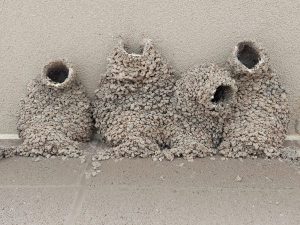 from the bird colony along with collecting on the ground. Homeowners have also reported problems with parasites entering the house through building cracks next to the nests which poses a potential health risk to humans and animals.
from the bird colony along with collecting on the ground. Homeowners have also reported problems with parasites entering the house through building cracks next to the nests which poses a potential health risk to humans and animals.
 Woodpeckers primarily feed on wood-boring insects using their strong beak and long tongue to dislodge food. Some members of the Woodpecker Family (Flickers) feed on insects of the ground, while others prefer native berries, fruits, and nuts.
Woodpeckers primarily feed on wood-boring insects using their strong beak and long tongue to dislodge food. Some members of the Woodpecker Family (Flickers) feed on insects of the ground, while others prefer native berries, fruits, and nuts.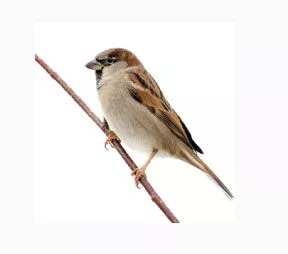 The House Sparrow is the number two urban pest bird. Introduced as a species to North America, the house sparrow quickly spread across the country due to its lack of natural enemies and its adaptive traits. Its ability to nest in urban structures, eat urban scraps, and a large breeding capacity are some of these adaptive traits.
The House Sparrow is the number two urban pest bird. Introduced as a species to North America, the house sparrow quickly spread across the country due to its lack of natural enemies and its adaptive traits. Its ability to nest in urban structures, eat urban scraps, and a large breeding capacity are some of these adaptive traits.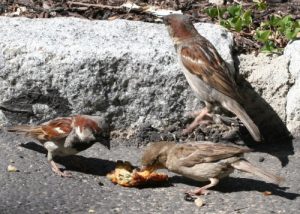 eaves of houses.
eaves of houses.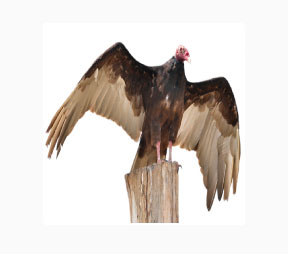 The Turkey Vulture does not win any beauty contests. The birds’ shape and head look similar to a turkey, with a red head and dark body feathers.
The Turkey Vulture does not win any beauty contests. The birds’ shape and head look similar to a turkey, with a red head and dark body feathers.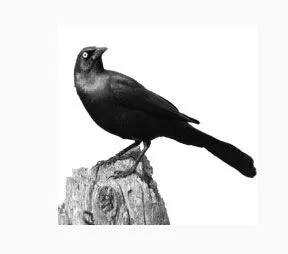 Grackles are boisterous, abundant members of the Troupial Family. The common grackle has a green,blue, or purple iridescent tinted black plumage with a glossy purplish head, neck, and breast with the female of the species, slightly smaller and duller colored.
Grackles are boisterous, abundant members of the Troupial Family. The common grackle has a green,blue, or purple iridescent tinted black plumage with a glossy purplish head, neck, and breast with the female of the species, slightly smaller and duller colored.